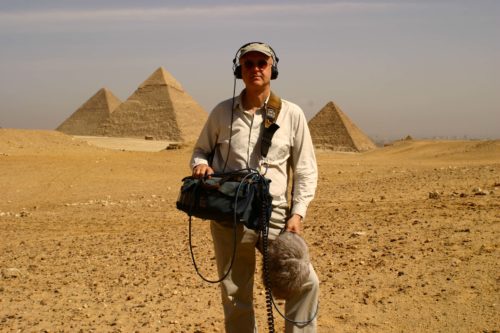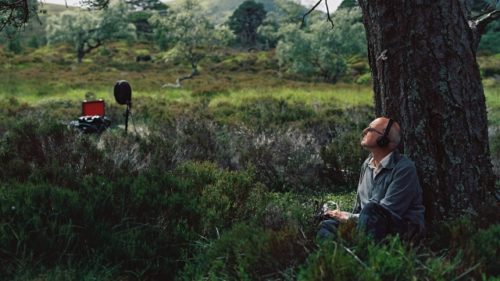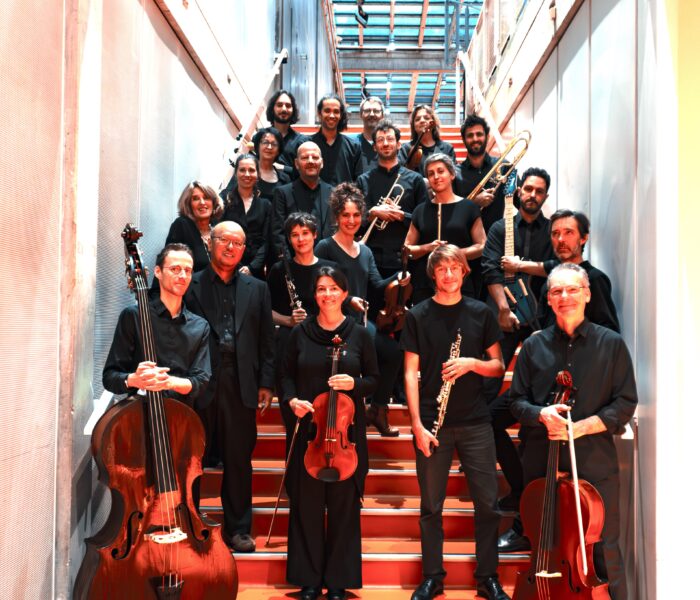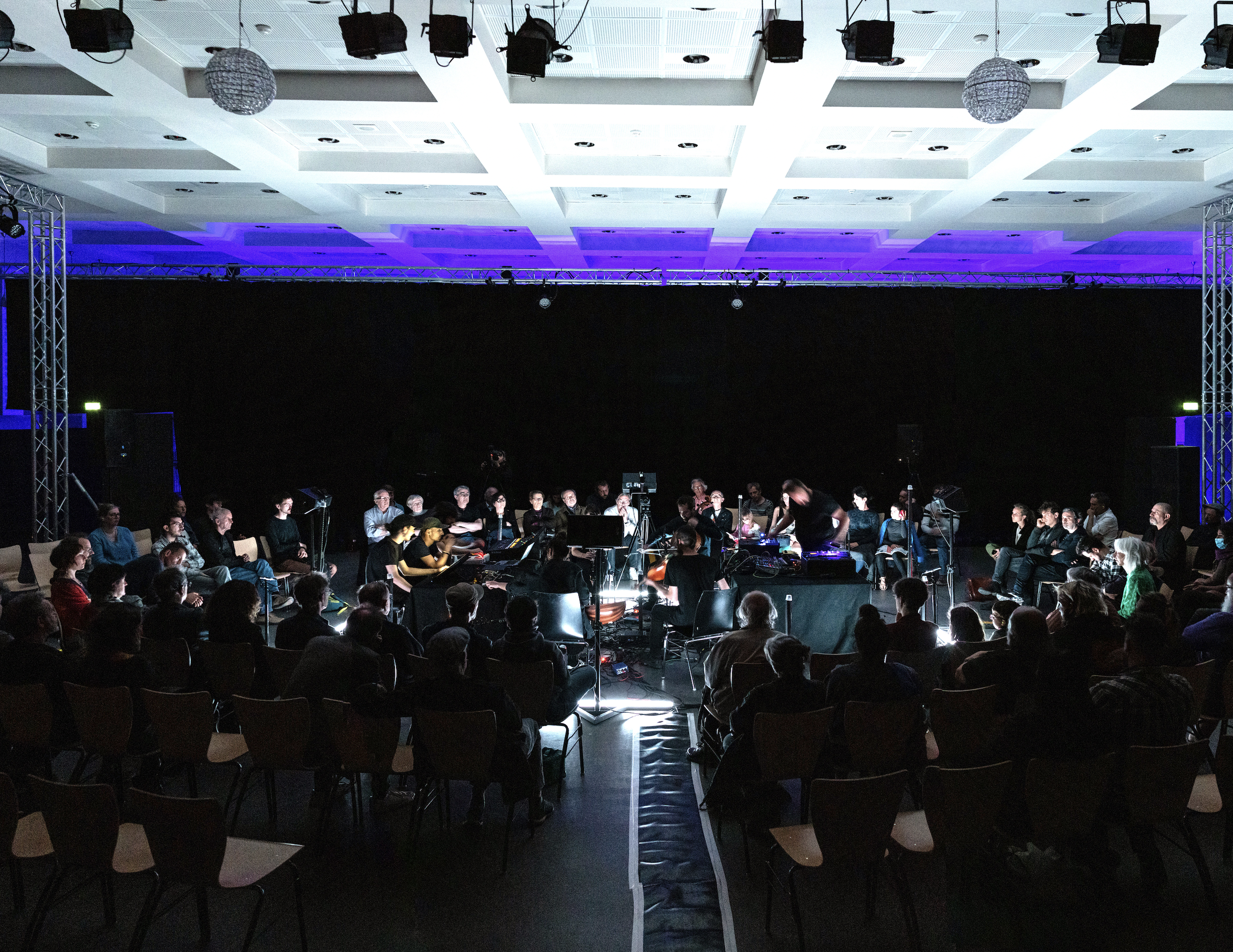Having started out on the punk and industrial scene, Englishman Chris Watson has become one of the leading figures in field recording. Half-naturalist, half-spiritualist, he seeks, with extreme sonic precision, to capture the spirit of places as much as the multiple layers of history, the sometimes invisible symphony of the elements as much as the murmur of vanished presences.
Music without instruments
For his 14th birthday in 1966, the young Chris Watson received a shocking gift: a portable tape recorder with which he immediately began experimenting. The Sheffield teenager became fascinated by composers who produced music from fixed sounds, notably Karlheinz Stockhausen and Pierre Schaeffer. The latter's famous Étude pour chemins de fer (1948) fascinated him because it perfectly expresses what he now calls (in this fascinating interview) the "heartbeat-like subliminal message of the sounds, and rhythms, of trains". This "subliminal message", this spirit of things, beings and especially places ("spirit of places"), he has spent his life trying to capture.
Around 1973, he embarked on the Cabaret Voltaire adventure with the late Richard H. Kirk and Stephen Mallinder. The trio's initial idea was to produce "music withoutmusical instruments". Following the example of Fluxus in the art world, its musicians seek a creative spontaneity strongly influenced by the Dada movement (as evidenced by the name they have chosen for themselves), which they express with a shaggy, barbed, distorted sonic actionism (the albums Mix-up and Three Mantras, the reissues of the first demos, Attic Tapes). Starting out with a few bold artistic jokes - such as concerts using portable tape recorders in public toilets, or terrorist broadcasts from car-top sound systems - Cabaret Voltaire became a symbol of fracas and noisy experimentation in the punk years, alongside London's famous "crushers of civilization", Throbbing Gristle. With the field recordings andfound sounds he injected into their records and concerts, Watson imposed a stowaway into the combinatorial world of music: pure, uncontrolled matter. In 1981, just as the band was affirming its shift towards pop and dance, Watson left to devote himself fully to his original passion: field recording - after a spell with the Hafler Trio, musician Andrew M. McKenzie' s electroacoustic project.
He then moved to Newcastle-upon-Tyne to take advantage of the vast open spaces of the Nothumberland countryside and explore sound, sounds, every sound in all its arcana, in its efflorescence, its disappearance, its life, its mystery. He quotes John Cage: "The world already has enough music." Leaving Cabaret Voltaire simply allowed Chris Watson to expand his observation of sound to infinity. Air and all the beings that depend on it, water and the seabed with hydrophones, the internal vibration of things that we capture with micro-contacts. The planet becomes his garden. This was the start of a career as a boom operator specializing in wildlife documentaries, which led him to work for BBC4, National Geographic and David Attenborough's famous Life series.
Spirits and places
Since the 1990s, Watson has pursued a parallel artistic endeavor that includes five albums on the English Touch label. As Time-Out journalist Sasha Frere-Jones wrote, he proposes"listening to the world" rather than trying to escape it.
Greatly influenced by the work of parapsychologist Thomas Lethbridge and essayist Alfred Watkins (a great surveyor of England and inventor of the light meter, Watkins theorized from his observations the existence of a vast network of vanished roads, of erased "lines", dating from before the Roman occupation), Watson seeks to unearth the unspeakable memory of places, the auditory traces of events that have left their mark on them, their more or less metaphorical ghosts (there's a sound design project based on his recordings called Haunted Spaces).
Does a place called Bloody Bush or Murder Rock, for example, contain audible remnants of the past that gave it such a reputation? And, on a more ordinary level, when we visit an apartment or a house, we can sometimes sense an atmosphere that attracts or repels us. Does this atmosphere have a sound signature? Can it be trapped? Habitat, animal or human, present or ancient, is one of his obsessions. His first album, Stepping into the Dark (1996), features such captures of almost intangible objects, spread across various locations chosen according to his personal psycho-geography. He scrupulously adheres to his recipe for "composing" a field recording (see this lecture, at 6'34): a sonic ambience laid like a foundation on which rustle sonic traces of often animal habitats, endowed with greater dynamics, and on top of these two layers, at the pinnacle, a particular object, even more present, which gives the piece its individuality. " A shimmering acoustic, a special timbre, sometimes rhythmic, percussive, fleeting animal sounds. By turns windy, wet, dry, narrow, wide, hot, cold, daytime, nighttime, serene, threatening, inhabited by a thousand animal voices, croaking, singing, squeaking, roaring, that infinite collision of life forms and elements we call "nature", Stepping into the Dark possesses an elemental power in the magical sense of the word. Our senses, our body's memory of them, are awakened by sound. In the end, Watson takes concrete music and its somewhat demiurgic dream of pure sound creation detached from all causality, suspended in a space absolutely transcending its genesis (making the "dramatic context" of fixed sound vanish, according to Schaeffer's method). He replaces it with an Orphic reverie exploring the depths, the physical folds as much as the memories of the world. HisSound Map of Sheffield, created in 2013 for the Millennium Gallery, belongs to a similar register.
Watson generally prefers "naturalistic" pieces with as little post-production as possible, and the "long forms" of raw recording where the artistic work, in addition to the choice of microphones and their placement, comes down to deciding the beginning and end of the recording. We find this approach in the strangeclose-ups of animal sounds such as the purring of a monkey (!) or the scraping of a horse's teeth inOutside the Circle of Fire (1998). " Can we listen to a listening device?" asks Peter Szendy in his book Ecoute, une histoire de nos oreilles. Watson effectively reduces the sonic work as much as possible to the transmission of an acoustic experience of reality. Listening is a life in itself. It's an acquired wisdom, an apprenticeship in perception, a kind of applied phenomenological reduction. Sometimes you have to know not to record in order to record well: "The older I get, the less I record. I'm very careful when I press 'record'," declared Chris Watson in 2015. This philosophy permeates the very simple In St Cuthbert's Time (2013), a record on which he attempts to reproduce the sound environment of the sacred island of Lindisfrane, circa 700 A.D. This meant recording none of the sound parasites of modern life, a mission that must have required, as the site a closer listen pointed out, "a saint's patience".
The folds of reality
But Watson also uses post-production, collage, mixing and filtering techniques. Capturing the spirit of a place doesn't have to be "pure"; it remains a subjective approach to reality, with framing issues similar to those of a painting, a photograph or even a film shoot, to use a term coined by musician and theorist Michel Chion. He also plays with more or less overt constructivist forms such as time-lapse (collages of sounds from a single location taken at different times of the day, or even year, to "compress" time) or the assembly of various sources. In 2010, at the request of London's National Gallery, he even constructed the entire sound of a famous landscape painted by Constable in 1826, The Cornfield.
With his years of documentary practice, Chris Watson has acquired an impressive knowledge that allows him great precision in his choice of technical devices. But he also possesses a musical experience of the occupation of time (and we'd like to say: volume) that enables him to excel in his montages, endowing them with an almost narrative fluidity. On Weather Report (2003), for example, he attempts to capture the sonic substance, "mood and character" of vastly different meteorological regions. In a series of pieces lasting just under twenty minutes each, he lovingly combines the sounds of the same place, spread out over periods ranging from one day to several months, in Kenya (the muggy Ol-ooolol-O), Scotland (the very pastoral The Laipach) and Iceland (the very cold, very windy, very loud Vatnajokull).
Finally, Tren Fantasma (2011), his most constructed work, is a direct offspring of his youthful love, Schaeffer'sÉtude pour chemins de fer. Watson crafted a sound poem(Tone Poem) from a month's worth of sound recordings on a now-abandoned Mexican train line, composing "the music of a past journey into history." Of course, you could say: the spirit of a train. He recomposes the living emanations of the machine at will, plays with engine percussion and ambient harmonies, filters certain periodic repetitions in the manner of electro musicians(El divisadero). He dreams his subject at least as much as he records it. In this way, things are almost reversed from the days of Cabaret Voltaire: on this record, the music has become the stowaway of the field recording work. It's as if it had emerged of its own accord from a fascinated observation of the secrets of matter, of what Henri Michaux once called "life in the folds".
Guillaume Ollendorff



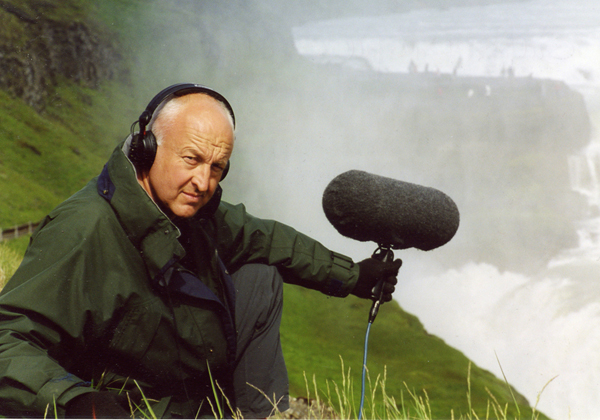)
